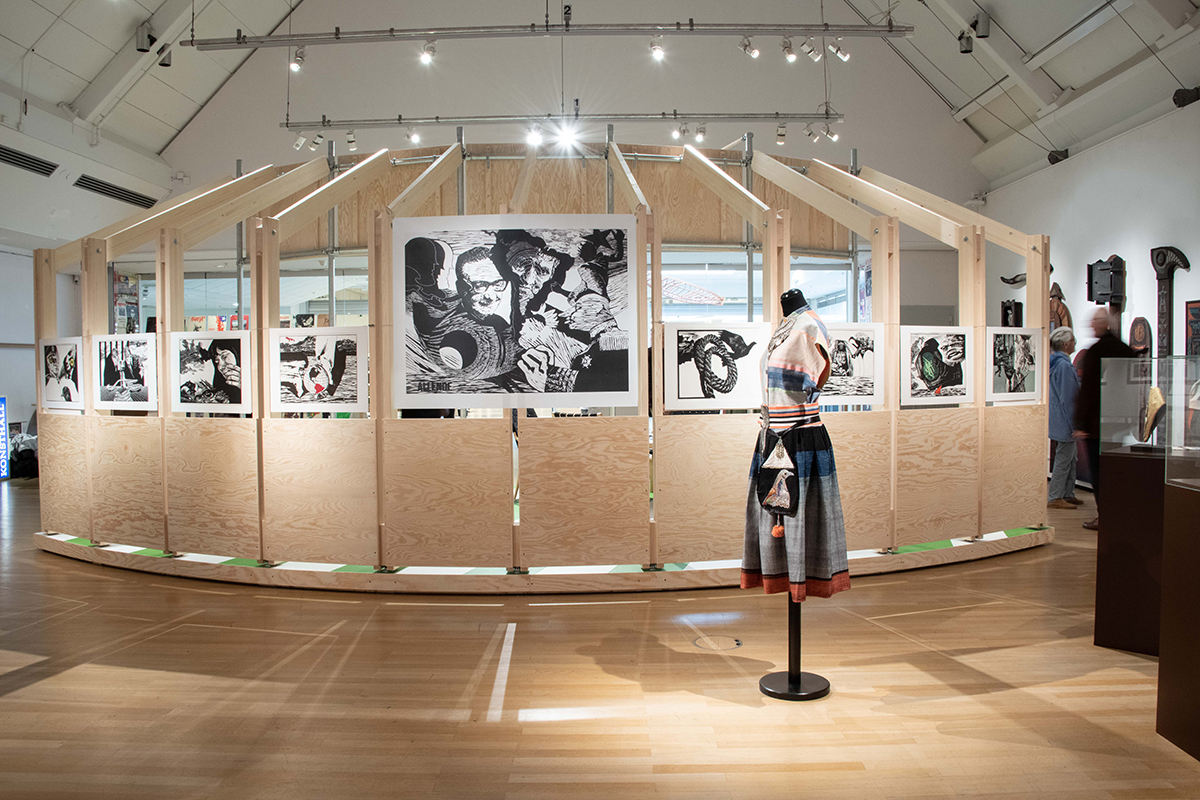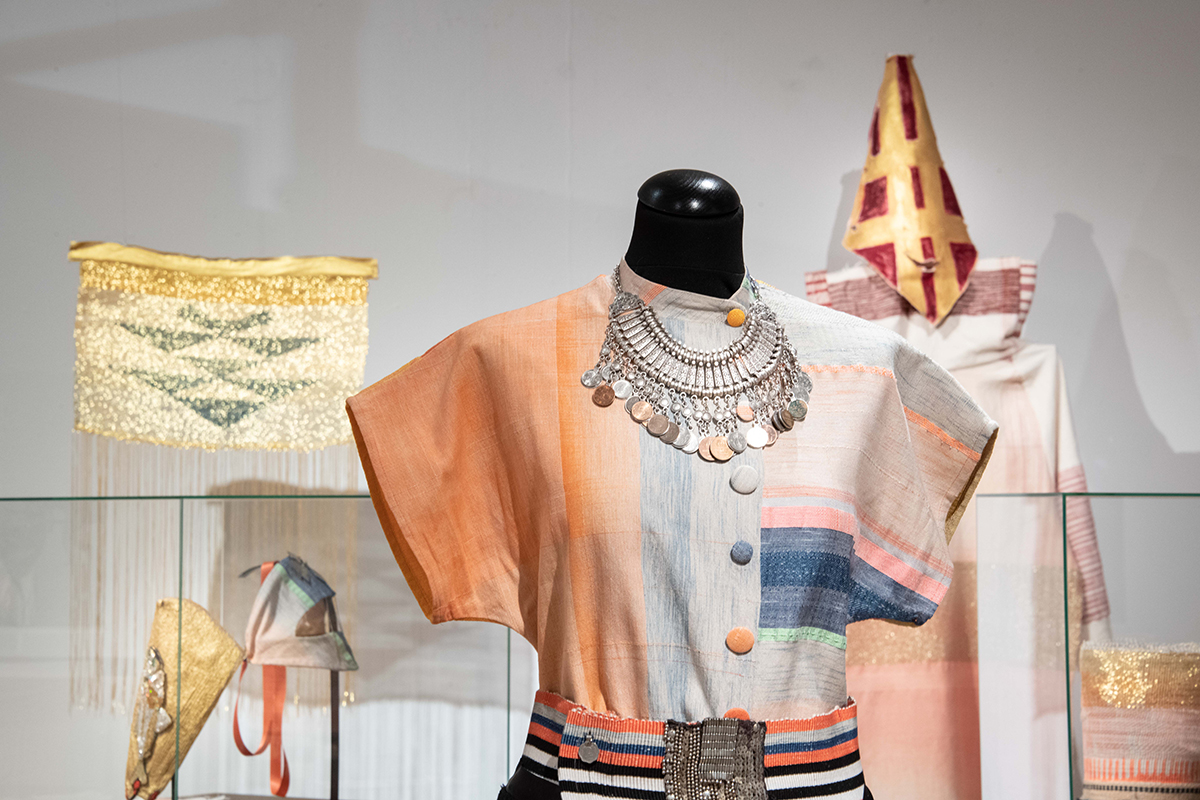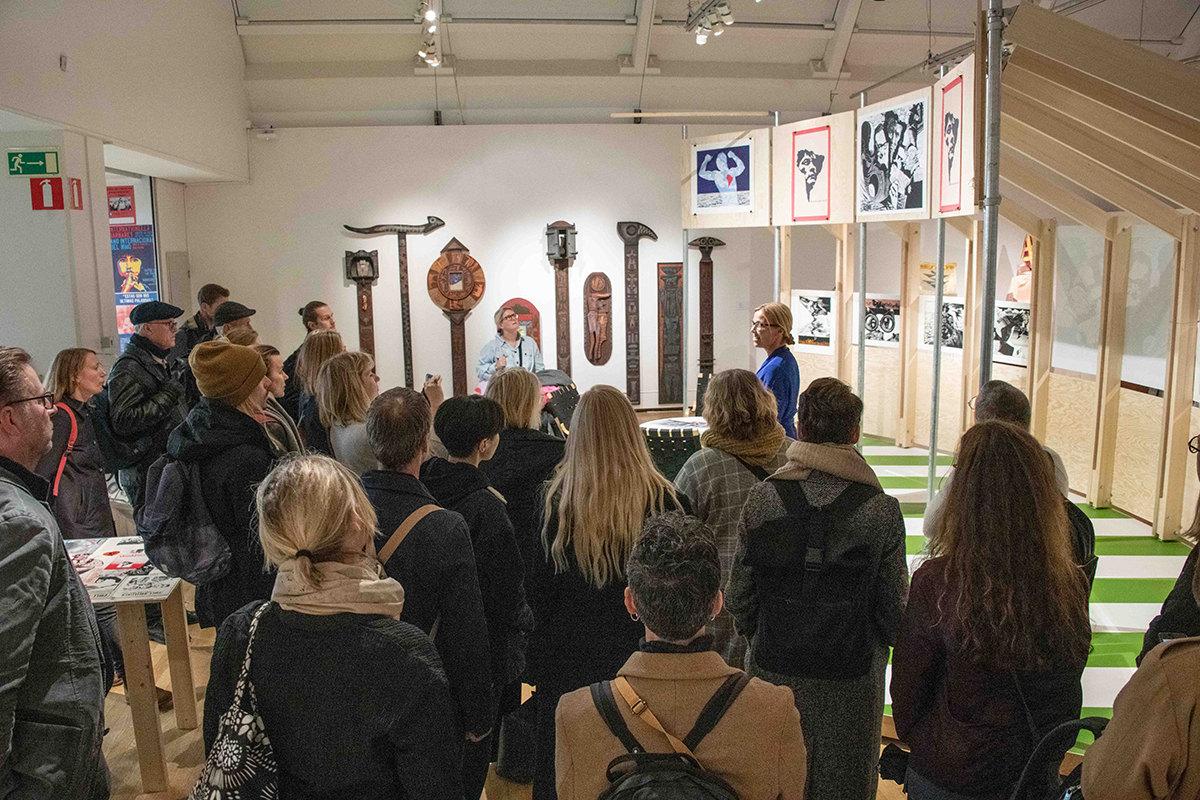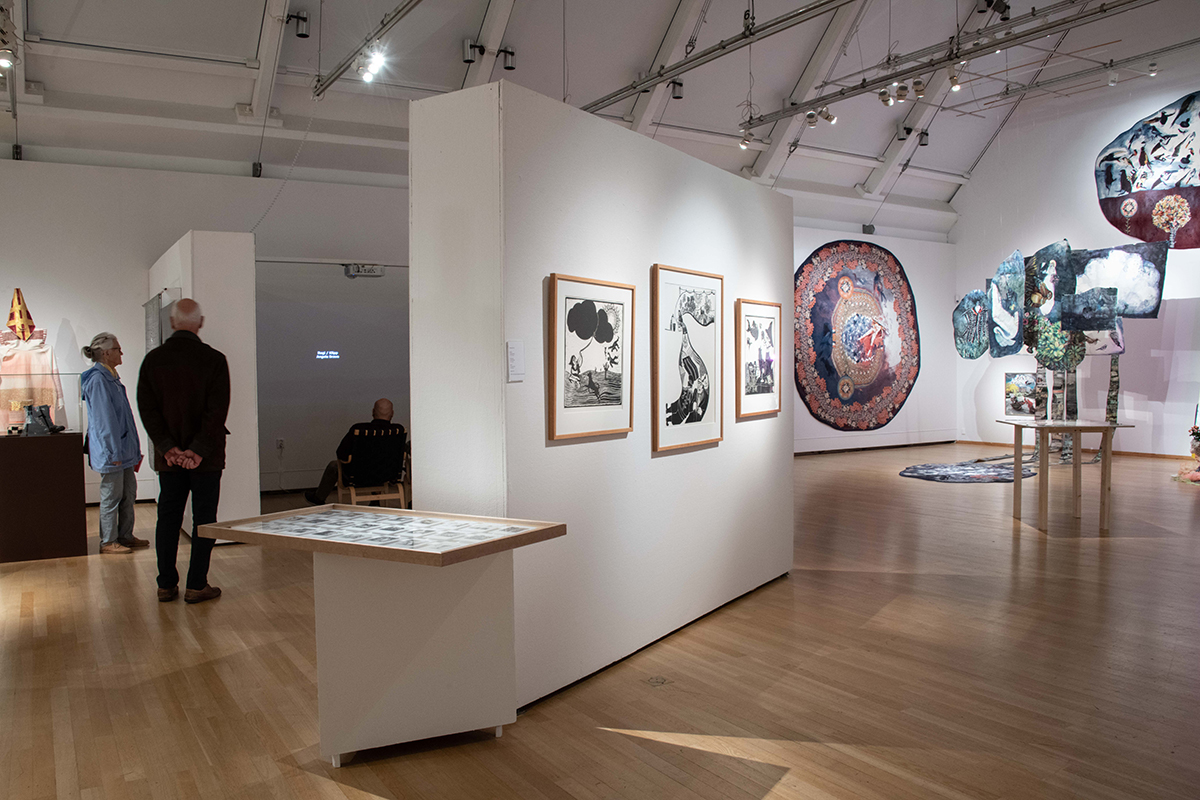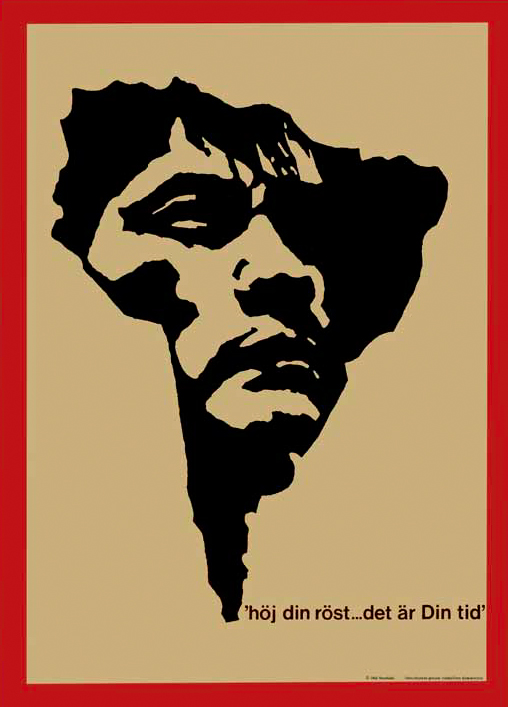
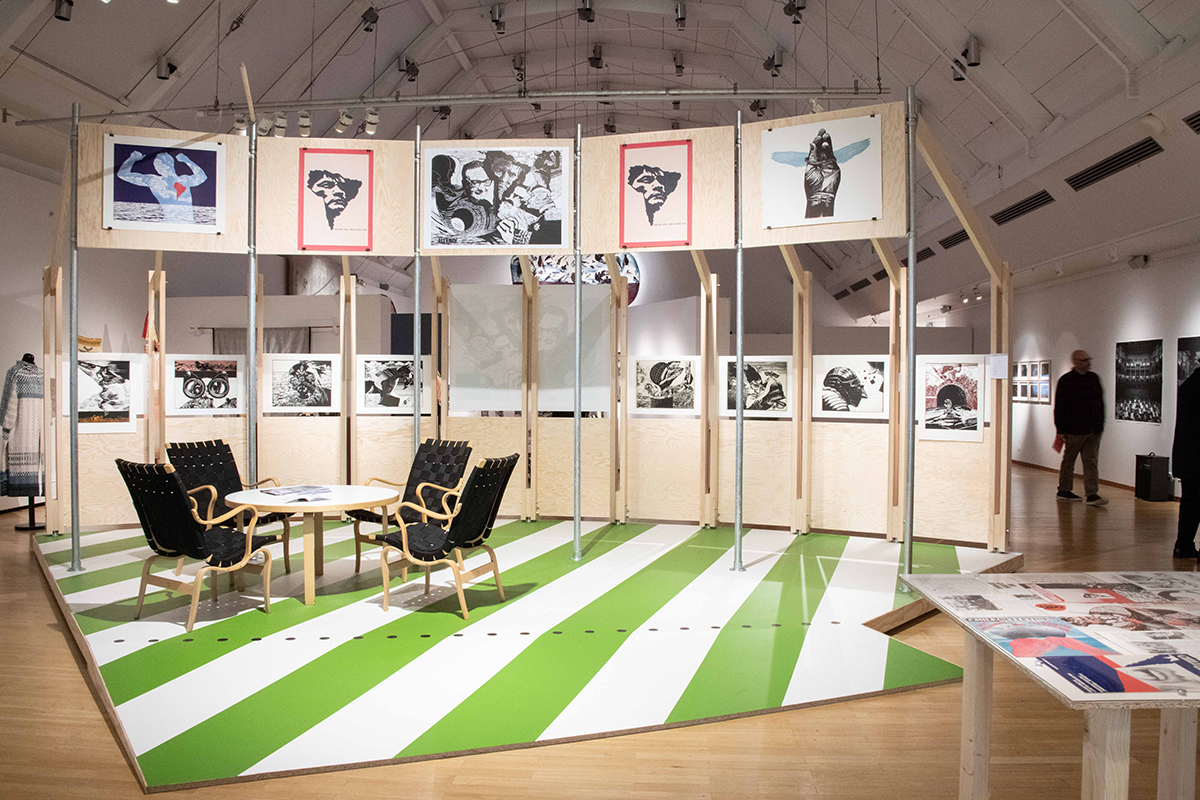

Henrik Andersson, Angela Bravo, Ricard Estay, Juan-Pedro Fabra Guemberena, Runo Lagomarsino, Valeria Montti Colque, Rolando Pérez, Cristian Quinteros Soto, Olof Sandahl and Mariana Silva Varela.
1978. On October 1st 2019, the International Museum of Resistance 1978 – 2020 opens at Södertälje konsthall. What does the year 1978 in the title refer to? Södertälje konsthall moved to its new premises and existing location in the year 1978 when the Luna Culture house, an entire block of this Swedish city at the time, was built in central Södertälje. The year 1978 was also the year of the exhibition the International Museum of Resistance “Salvador Allende”, a touring exhibition produced by Moderna museet in Stockholm. At this time artists around the world acted in solidarity with Chile’s cause, dictator Augusto Pinochet’s violence against his political opponents had created a worldwide outrage and an international solidarity movement. The solidarity movement in Sweden was active partly through the Chile Committee, a group of activists engaging through information campaigns and education that explored activism in relation to everything from sports to farming, often with a broad interest in arts and culture, divided into around a hundred local organisations, one of them present in Södertälje. Although primarily a movement of the political left the activism in relation to Chile was carried out by several political parties, as well as by groups without political affiliation, like the Chile Committee. It was this commitment and engagement as a social movement that would later form the basis of the Swedish anti-apartheid movement and the mission to join the struggle to end the injustices in South Africa. Many political refugees came to Sweden from Chile as a result of the extreme violence and persecutions, and many of these refugees and especially their children are today important voices of Sweden’s contemporary cultural life. What did the exhibition the International Museum of Resistance “Salvador Allende” of 1978 consist of and what was its aim? Formally the exhibition was a collection of works donated by Swedish artists, and there was a diverse programming of the exhibition including everything from performance events and murals painted in public space as well as musical concerts. Many of the artists included in the exhibition were among Sweden’s most celebrated artists, others were less known to a broader public – what united them was a cause for social justice. The collection of artworks in the show would be donated to a future Solidarity Museum in Santiago once the country had regained its independence. It would take until the year 1991 before the museum was inaugurated in Chile. What does solidarity mean today? Is it even possible to speak of such a concept today? Does it have relevance in a globalized world were most struggles are fractioned?
In the exhibition the International Museum of Resistance 1978 – 2020, the curators (Paola Zamora, born 1975 and Joanna Sandell, born 1972) have researched Swedish archives and looked at how Swedish artists continue to address the issue of solidarity and political commitment. In our second exhibition space Portal we will present an exhibition by artist Cecilia Valdés curated by Sarah Guerino Florén, this exhibition focuses solely on the art form “arpillera” – textile works mainly made by women in a seemingly naivistic style that are charged with social and political messages.
The oldest artist in the exhibition, Olof Sandahl, born in 1938, was part of the first edition of the International Museum of Resistance. Olof Sandahl has had a long career as a teacher of printmaking at the Royal College of Art. One of the youngest artists, Cristian Quinteros Soto, born in 1987, is currently studying at the same school. The exhibition The International Museum of Resistance 1978 – 2020 will present artists with experiences and memories of exile but also artists who have had a longstanding interest in Swedish cultural and political history. We have also included artists from or with experience of other Latin American countries such as Argentina and Uruguay. What happens when artists engage with political and personal events that are particularly powerful? Do we need to share the same experiences to be able to process specific events or social trauma? What can we learn from gained experiences and are there forgotten stories that should be brought back into conversation after the course of forty years or so in time? The International Museum of Resistance 1978 – 2020 tells of those who have disappeared, it speaks about rocks in nature that have become informal graves, about places that are not what they seem to be, and about a museum created by artists for the cause of social justice.
